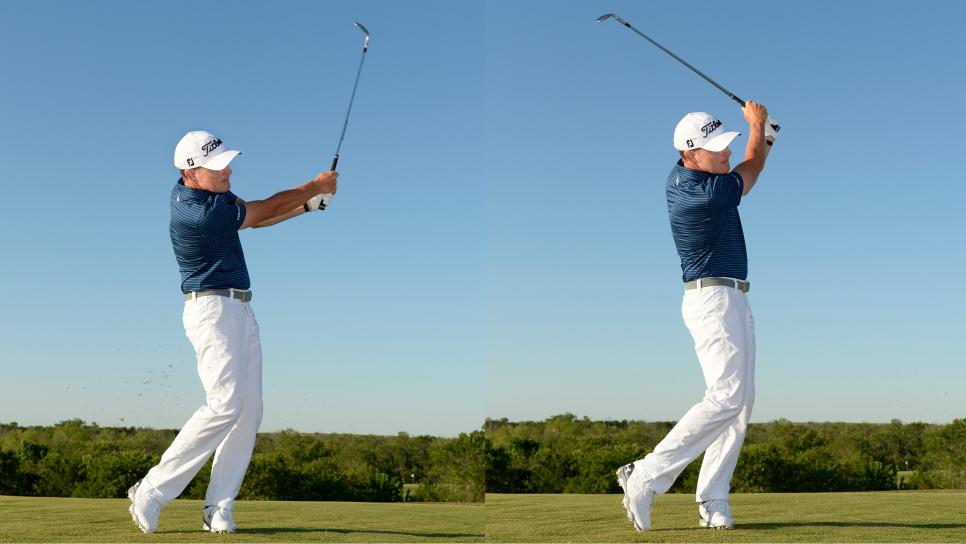Short Game
How To Stiff It Inside 100 Yards
If you try to regulate the distance you hit your wedge shots by changing the length of the swing, you're not as accurate as you could be.
Golf instruction is partly to blame. You might have been told to handle different distances by pretending your arms are like the hands on an imaginary clock face, and that you can dial in a specific shot by swinging back or through to a number on the clock. A backswing to 9 o'clock might result in a 30-yard shot, for example, but a backswing to 10 o'clock will send it 40 yards. That's a logical idea, but it's flawed. Why? Two swings can be the same length, but if the clubhead speed at impact isn't the same, the ball will go different distances. Conversely, swings of different lengths but the same speed will produce roughly the same distance. It's not magic. It's physics.
With that in mind, I'm going to teach you how to hit wedges pin high from various distances by changing your swing speed—that's how Jordan Spieth and I do it when we work together. To keep it simple, these shots will fly about the same height. You can experiment later with trajectory. For now, practice these stock shots, and you're on your way to becoming a wicked wedge player. —With Ron Kaspriske

ONE BACKSWING
Distance control on less-than-full wedges begins with making the same backswing no matter how far you have to go. A consistent end point lets you focus on downswing speed to regulate yardage. Start in a narrow stance with most of the pressure on your lead foot, the ball just back of center. Hinge the club up—that adds loft to the shot—and keep turning until your left arm is parallel to the ground (pictured above). That's as far as it should go. Now you're ready for any downswing.

CLOSE TO THE GREEN
The shortest wedge shots require commitment. By that I mean, you have to resist the urge to stop the swing right after impact. Keep the club moving, and its design will prevent the ball from going too far. As you start down from that halfway-back position, maintain your weight on your front foot and turn your body. You don't have to swing with a lot of effort, but finish with your chest facing the target and the club's shaft pointing at it (pictured above). That's commitment.

LONGER RANGE
For medium- and long-range wedge shots, swing the club and rotate your body toward the target at a faster pace. You can see here (pictured above) that the follow-through is longer for shots in the 40-to-60-yard range. That's a result of added speed. Note how I rotate my entire body toward the target—legs, too. I think of it like gears on a bicycle. Start with three gears (swing speeds), and see how far the ball goes with each. You'll develop your own yardage system.

30 DAYS TO BETTER GOLF
Get a tip every day for a month by signing up for our new online game-improvement program. Cameron McCormick and several other PGA professionals provide the lessons, from driving and putting to fitness and equipment, and we'll email you one a day for 30 days. Get started now at http://www.golfdigest.com/go/30days
Cameron McCormick, a Golf Digest Teaching Professional and the PGA Teacher of the Year, is based at Trinity Forest Golf Club outside Dallas.

